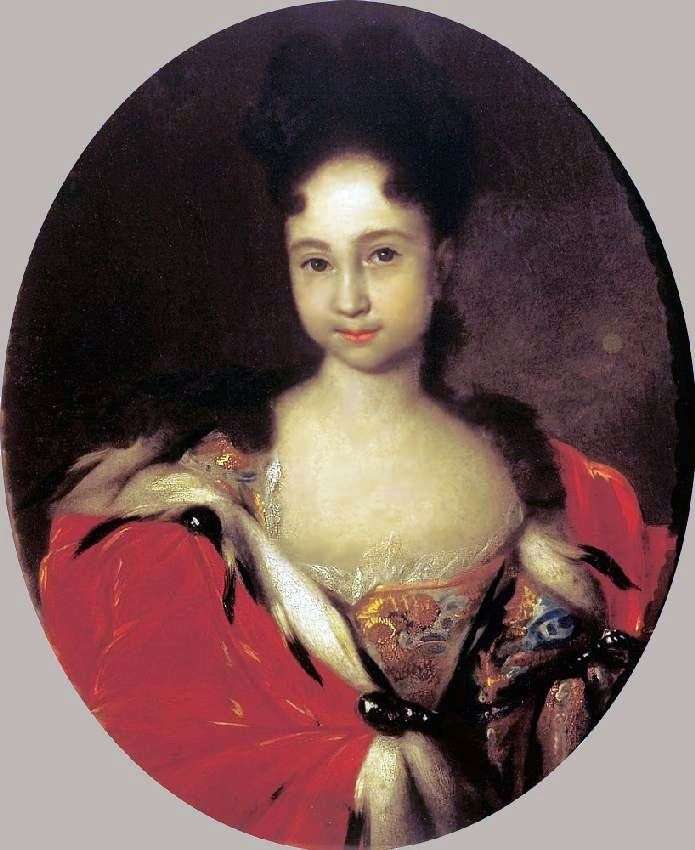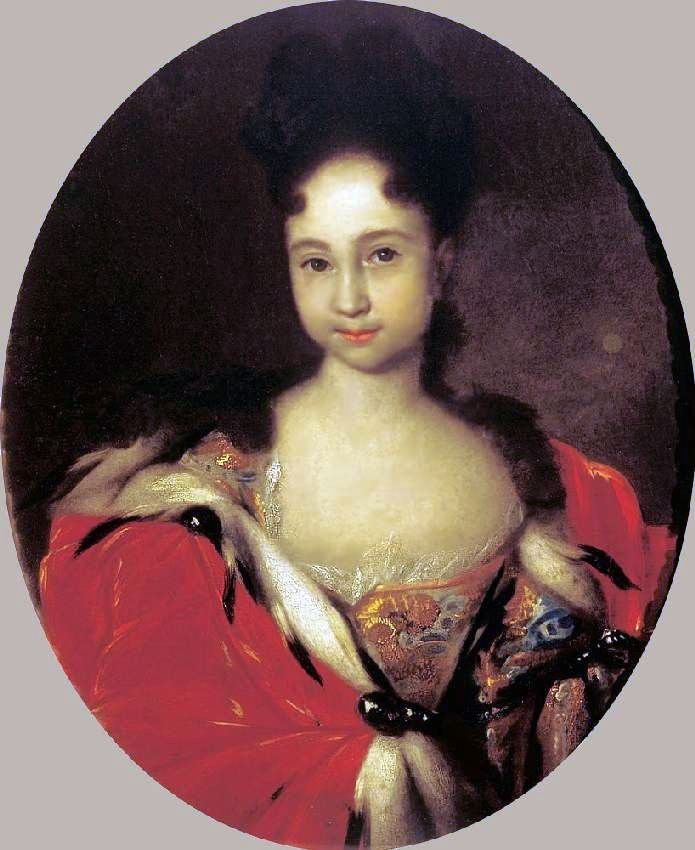
In 1716, painter Ivan Nikitich Nikitin was sent by Peter 1 abroad to Italy. But one can hardly say that he was sent there as a simple student. In a letter to Catherine in Berlin on April 19, 1716, Peter wrote: “… ask the king to order his person to write him off… so that they know that there are good masters from our people.” And in Italy, Nikitin, as a recognized master, received much more for maintenance from the treasury than the other tsarist pensioners. The portrait of Anna Petrovna, the eldest daughter of Peter and Ekaterina Alekseevna, performed by Nikitin before traveling abroad, really gave the Russian Tsar every reason to be proud of his artist.
Nikitin imprinted Tsesarevna Anna at the age of 6-7 years. According to the fashion and rules of portrait art of that time, the girl is depicted as an adult: in a flirty pose, with a high haircut and long black hair scattered around her shoulders, in a heavily decolted blue dress with large gold patterns and a bright red mantle, lined with an ermine, indicating belonging child to the royal family.
In this portrait, the color is amazing – everywhere extraordinarily intense, real, glowing from the inside, leaving no room for gray shadows. The artist achieves this impression by increasing the paint layer in the lighted places with more and more bright and thick strokes, while the shadows remain light, transparent, and delicate shades – this is how Anna’s face and open chest are painted. The sensation of color flare on the mantle is created by swift orange and scarlet strokes thrown over the red tone. The artist does not depict the feelings, the character of the model, but by the power of the glow of colors, the restless movement of the lines, as it were, creates it anew, reviving matter before our eyes.
Anna Petrovna, Tsesarevna and Duchess Golshtinskaya, daughter of Peter the Great and Catherine I. According to contemporaries, Anna looked very much like her father, was intelligent and beautiful, educated, spoke beautifully in French, German, Italian and Swedish. Peter I loved her very much. The future husband of Anna, the duke of Holstein-Gottorp, Friedrich-Karl, came to Russia in 1721 in the hope, with the help of Peter the Great, to return Schleswig from Denmark and again to acquire the right to the Swedish throne. The Nishtadt world deceived the Duke’s expectations, as Russia pledged not to interfere in the internal affairs of Sweden.
On November 22, 1724, the marriage contract longed for the duke was signed, by which, by the way, Anna and the duke refused for themselves and their descendants all rights and claims to the crown of the Russian Empire; but at the same time Peter granted himself the right, at his discretion, to call for the succession of the crown and the Empire of Russia to one of the princes born of this marriage, and the duke undertook to fulfill the will of the emperor without any conditions. She died on March 4, 1728, in Holstein, barely reaching the age of twenty, discharged from the burden by her son, Karl-Peter-Ulrich.
 Retrato de Anna Petrovna, hija de Peter 1 – Ivan Nikitin
Retrato de Anna Petrovna, hija de Peter 1 – Ivan Nikitin Portrait d’Anna Petrovna, fille de Pierre 1 – Ivan Nikitin
Portrait d’Anna Petrovna, fille de Pierre 1 – Ivan Nikitin Portrait of Princess Anna Petrovna by Adolsky Ivan Nikolayevich
Portrait of Princess Anna Petrovna by Adolsky Ivan Nikolayevich Portrait of Peter I by Ivan Nikitin
Portrait of Peter I by Ivan Nikitin Portrait de la princesse Anna Petrovna – Adolsky Ivan Nikolaevich
Portrait de la princesse Anna Petrovna – Adolsky Ivan Nikolaevich Portrait of princes Anna Petrovna and Elizabeth Petrovna by Louis Caravacq
Portrait of princes Anna Petrovna and Elizabeth Petrovna by Louis Caravacq Peter I on the deathbed by Ivan Nikitin
Peter I on the deathbed by Ivan Nikitin Portrait of Peter Fedorovich, in the future of Peter IIIg by Fedor Rokotov
Portrait of Peter Fedorovich, in the future of Peter IIIg by Fedor Rokotov